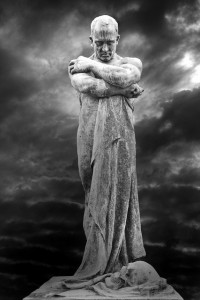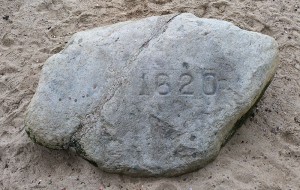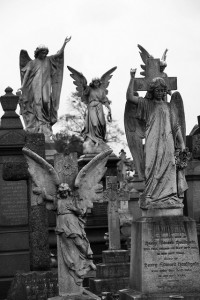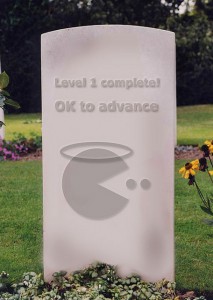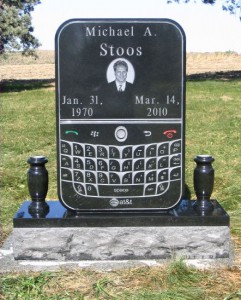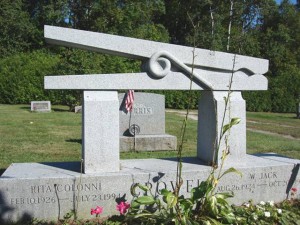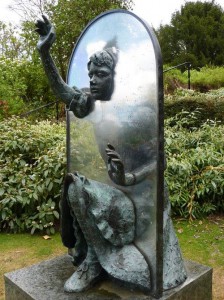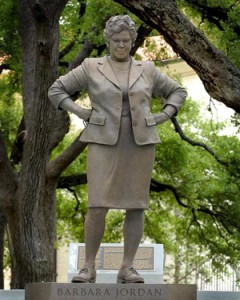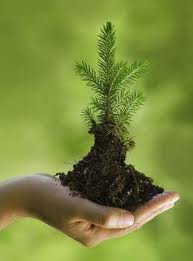
There are so many reasons that more and more people are now choosing cremation. Here are some of the main reasons that half of all deaths now elect cremation as the final disposition.
- More Economical
- A Greener Earth Friendly Option
- Less Time Sensitive (Freedom of Time)
- Easier, No Cemetery Required
- Endless Memorialization Options
- Don’t Want To Take Up Space (Land)
- Like The Idea Of Scattering Ashes
- Religious Freedom

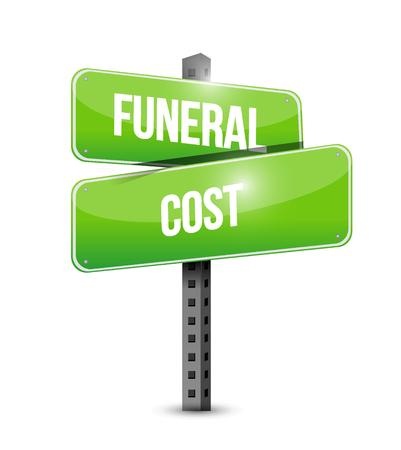 COST: When you get down to the basic cost of a funeral, cremation can be significantly cheaper. The average traditional funeral these days can cost $8,000.00 to $15,000.00 or more. And a basic cremation is $1,000.00 to $2,000.00. Why such a broad range in price? Simple, it depends on who you call! And of course the choices that you make. Over the years, I have noticed something about how the general public describes the cost of a funeral that I would like to clear up right now. I noticed that when people quote the cost of a traditional funeral they tend to group all of the related costs together! For example “Mom’s Funeral Cost $18,00.00”… but the actual funeral costs might have been $8,000.00 and included the cost of a cemetery plot, digging the grave, flying in certain relatives, putting aunt Millie up at the Hilton and a $6,000.00 reception at a catering hall. But when quoting the cost of cremation people tend to just quote the basic cost “Instead of having a funeral Dad was cremated and it only cost $995.00”. They don’t mention the $10,000.00 memorial catering cost at the country club, the band and the travel costs! So this is one reason the difference in Cremation versus a Traditional Funeral seems like a huge difference in cost. In actuality Cremation is just a disposition like burial is a disposition and all the related costs depends on the CHOICES THAT WE MAKE. “The cremation cost $995.00”. The burial including the purchase of the plot and digging the grave might only cost $2,000.00 but people never just quote this cost, they lump it all together with the choices that they make. These are the conversations that really annoy funeral directors and instantly put them on the defense of the funeral costs.
COST: When you get down to the basic cost of a funeral, cremation can be significantly cheaper. The average traditional funeral these days can cost $8,000.00 to $15,000.00 or more. And a basic cremation is $1,000.00 to $2,000.00. Why such a broad range in price? Simple, it depends on who you call! And of course the choices that you make. Over the years, I have noticed something about how the general public describes the cost of a funeral that I would like to clear up right now. I noticed that when people quote the cost of a traditional funeral they tend to group all of the related costs together! For example “Mom’s Funeral Cost $18,00.00”… but the actual funeral costs might have been $8,000.00 and included the cost of a cemetery plot, digging the grave, flying in certain relatives, putting aunt Millie up at the Hilton and a $6,000.00 reception at a catering hall. But when quoting the cost of cremation people tend to just quote the basic cost “Instead of having a funeral Dad was cremated and it only cost $995.00”. They don’t mention the $10,000.00 memorial catering cost at the country club, the band and the travel costs! So this is one reason the difference in Cremation versus a Traditional Funeral seems like a huge difference in cost. In actuality Cremation is just a disposition like burial is a disposition and all the related costs depends on the CHOICES THAT WE MAKE. “The cremation cost $995.00”. The burial including the purchase of the plot and digging the grave might only cost $2,000.00 but people never just quote this cost, they lump it all together with the choices that they make. These are the conversations that really annoy funeral directors and instantly put them on the defense of the funeral costs.
What really annoys this particular funeral director is the general consensus that cremation means there isn’t a funeral. “There’s no funeral…he’s being cremated”! The truth is just the opposite. With cremation you can have any kind of funeral you want, even a traditional funeral! The only real difference is that instead of the body going to the cemetery, it goes to the crematory. Remember that cremation like burial is just the final disposition. The word “Funeral” simply means that the body is present at the funeral service. If you have a service without the body present because it was already buried or cremated then we use the term “Memorial Service” or other phrases like a Celebration of Life or a Going Home Ceremony. But if the body is not there it’s not a funeral.
 GREEN: The general public perceives cremation as a greener alternative to burial. A traditional burial takes up land permanently. And the chemicals that are used for embalming are cancerous and could leak into the water table. Here in the US an outer concrete burial vault is used and requires the manufacture of 1.6 tons of concrete and steel, leaving a large carbon footprint through the process of manufacturing. The caskets are often made of steel and many are shipped here from China (not green). Wooden caskets that are made from unsustainable sources like mahogany destroy the rain forest. BUT cremation isn’t exactly green either! Cremation involves burning fossil fuels (not green) and can release mercury from dental fillings into the air. What’s really green is called “Green Burial” and is only permitted in a natural burial site. More and more of these types of cemeteries are becoming available. Green burial is a burial in a naturally biodegradable casket or shroud with no embalming and no burial vault in a shallow grave. Green burial is the most natural and greenest disposition of all.
GREEN: The general public perceives cremation as a greener alternative to burial. A traditional burial takes up land permanently. And the chemicals that are used for embalming are cancerous and could leak into the water table. Here in the US an outer concrete burial vault is used and requires the manufacture of 1.6 tons of concrete and steel, leaving a large carbon footprint through the process of manufacturing. The caskets are often made of steel and many are shipped here from China (not green). Wooden caskets that are made from unsustainable sources like mahogany destroy the rain forest. BUT cremation isn’t exactly green either! Cremation involves burning fossil fuels (not green) and can release mercury from dental fillings into the air. What’s really green is called “Green Burial” and is only permitted in a natural burial site. More and more of these types of cemeteries are becoming available. Green burial is a burial in a naturally biodegradable casket or shroud with no embalming and no burial vault in a shallow grave. Green burial is the most natural and greenest disposition of all.
TIME: Because we usually want to get people buried in the ground before they rapidly begin to decompose, a burial requires a time frame of urgency that demands some fast leg work and usually having the funeral with in a week! And if you are Jewish then you’re supposed to have the burial by sundown of the day after death! With cremation you have nothing but time. Of course if you’re going to have public visitation with the body present you are back on a time line. But once the cremation is complete the ashes have no “shelf life” and you can plan a memorial celebration of life at your convenience. (WARNING) There is still such thing as waiting too long. Sometimes to meet the schedules of so many, the services are put off for months. For example, when someone dies in the Fall and the family elects to wait until the Spring and make the services part of the family reunion at the club. TOOOO Long! Remember that funerals are to support the living in their grief and loss. A proper memorial services lays the foundation for the healing to begin, just like a wedding provides a platform of support to the joining of a couple for life. With too much time in-between, the months leading up to the service can create more unnecessary grief for the survivors due to a lack of support.
Easier: Planning a funeral with the disposition of cremation can definitely be easier. You have the freedom of time on your side and don’t have to feel rushed about getting the person in the ground! You don’t have to select a casket, a vault, a cemetery plot, and other related items. You have the time to involve family members in the planning process and hopefully can create a memorable experience that will showcase a life well lived. Hire a certified celebrant and put some thought and time into this once in a lifetime event. You have one chance to do it right, so take your time and plan a Celebration of Life that people can connect with and relate to. This is why I promote Celebrant funerals and not some old 2,000 year old ceremony that an uninformed clergy member throws together! (Insert Name Here). Use the time to write down stories to share, collect pictures for display or better yet turn the pictures into a memorial video. Play the perfect music and serve the food that the deceased would be proud of! There are so many services available through your local funeral home that can add to the memorial ceremony experience, so use the time to learn about them. And do some research via the Internet on how to create a special and memorable memorial event.
Memorial Options: There are so many options available when you choose cremation. Like a Traditional Burial you can still have visitation with the body present for the final goodbyes and support for the family. You can also have an event in just about any public location that you desire. Consider a place that can handle the anticipated number of people who will attend. Choose a place where people are comfortable enough to join in and share a ceremony that will shine a spotlight on the life lived and the many ways that this person has affected the lives and the fabric of life. Use pictures, objects, belongings and stories to help those attending connect. The spirit of the deceased will often convey what would be appropriate for their personal celebration.
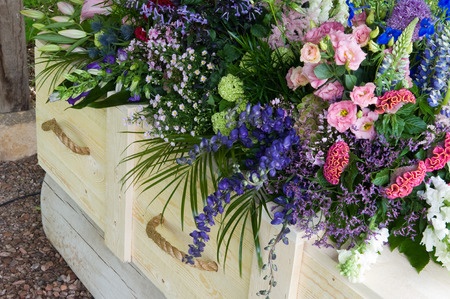 The money saved by choosing cremation can be used to purchase goods and services that will further personalize the experience of joining together to commemorate a life well lived. First, select a casket. This can be as simple as a cardboard box, a simple wooden box or an ornate cremation casket. They call these things alternative containers and by law you need one for cremation to take place.
The money saved by choosing cremation can be used to purchase goods and services that will further personalize the experience of joining together to commemorate a life well lived. First, select a casket. This can be as simple as a cardboard box, a simple wooden box or an ornate cremation casket. They call these things alternative containers and by law you need one for cremation to take place.
If you are having a traditional viewing before the cremation then you should get a casket with a fabric interior that is suitable for public viewing. Most funeral homes rent caskets for this purpose and then a cardboard box is used for the actual cremation.
For the ceremony you can use things like memorial folders or prayer cards and custom programs that follow the services and can then be saved as a memory keepsake. Large photos, custom blankets and a video tribute can add to the memorial service. And a tree seedling or seeds that can be taken home and be planted in memory and will continue the circle of life.
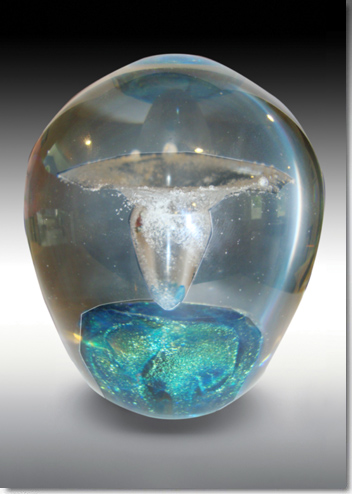
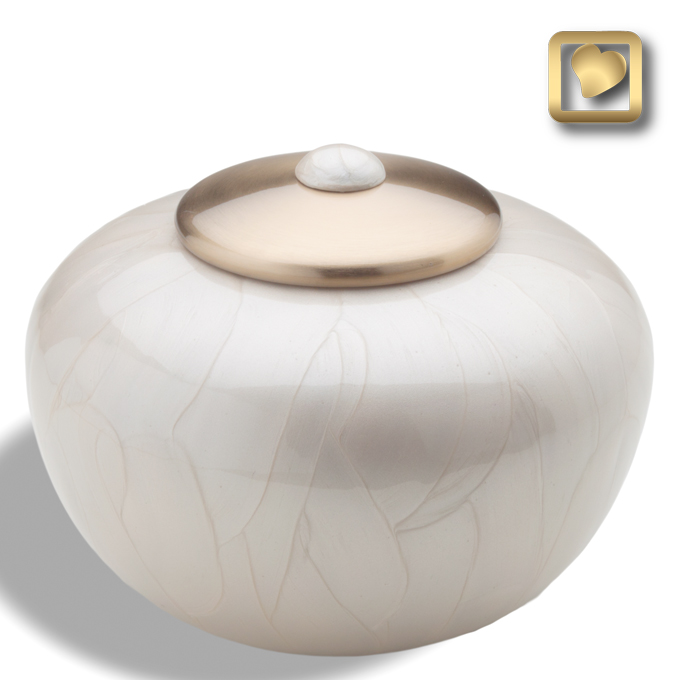 If an urn is used to hold the ashes, many put it on display at the service on a table or alter that is set with candles and flowers. When selecting an urn you should first know the final disposition of the ashes. Will they be kept at home on display, buried in the cemetery, placed in a niche, or scattered to the winds. Cremation urns are specially designed to suit all of these different destinations. Even floating biodegradable urns for scattering in lakes and oceans. One new style of urn converts into a birdhouse following the scattering of the ashes! With the new “Loved One Launcher” ashes can also be blasted 70 feet into the sky along with confetti and streamers. Talk about going out with a bang! When it comes to ashes there is no right or wrong way… just personal choices and family traditions. Often family members will use small keepsake urns to divide the ashes up between family and friends. These keepsake urns allow those who choose to scatter to retain a small amount of the ashes forever.
If an urn is used to hold the ashes, many put it on display at the service on a table or alter that is set with candles and flowers. When selecting an urn you should first know the final disposition of the ashes. Will they be kept at home on display, buried in the cemetery, placed in a niche, or scattered to the winds. Cremation urns are specially designed to suit all of these different destinations. Even floating biodegradable urns for scattering in lakes and oceans. One new style of urn converts into a birdhouse following the scattering of the ashes! With the new “Loved One Launcher” ashes can also be blasted 70 feet into the sky along with confetti and streamers. Talk about going out with a bang! When it comes to ashes there is no right or wrong way… just personal choices and family traditions. Often family members will use small keepsake urns to divide the ashes up between family and friends. These keepsake urns allow those who choose to scatter to retain a small amount of the ashes forever.
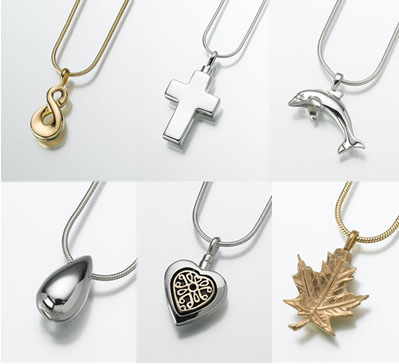
Cremation Je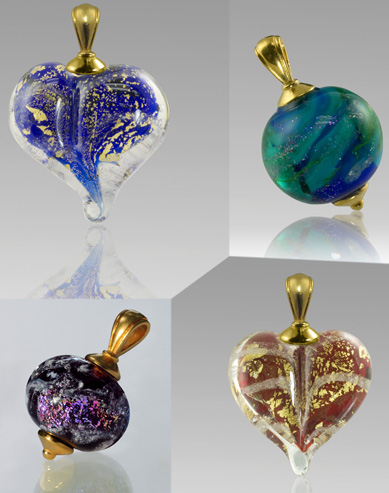 welry serves a similar purpose and can be worn as a lasting tribute and close connection to the loved one. There is cremation jewelry that has an inner chamber to hold the ashes inside and also cremation jewelry that is custom made with the ashes.
welry serves a similar purpose and can be worn as a lasting tribute and close connection to the loved one. There is cremation jewelry that has an inner chamber to hold the ashes inside and also cremation jewelry that is custom made with the ashes.
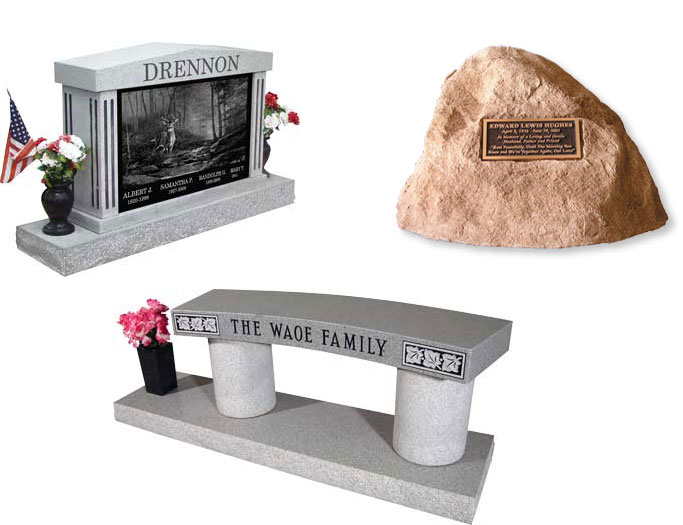
Even monuments are made that will hold the ashes inside as an alternative to burial. Some are styled like traditional monuments and many look like natural rocks and boulders that can blend right into the family garden. The advantage of cremation style monuments is that they can be moved as well as serve as a memorial focal point.
Scattering: The decision to scatter ashes is no longer unique. With more than half of all Americans and Canadians now choosing cremation.
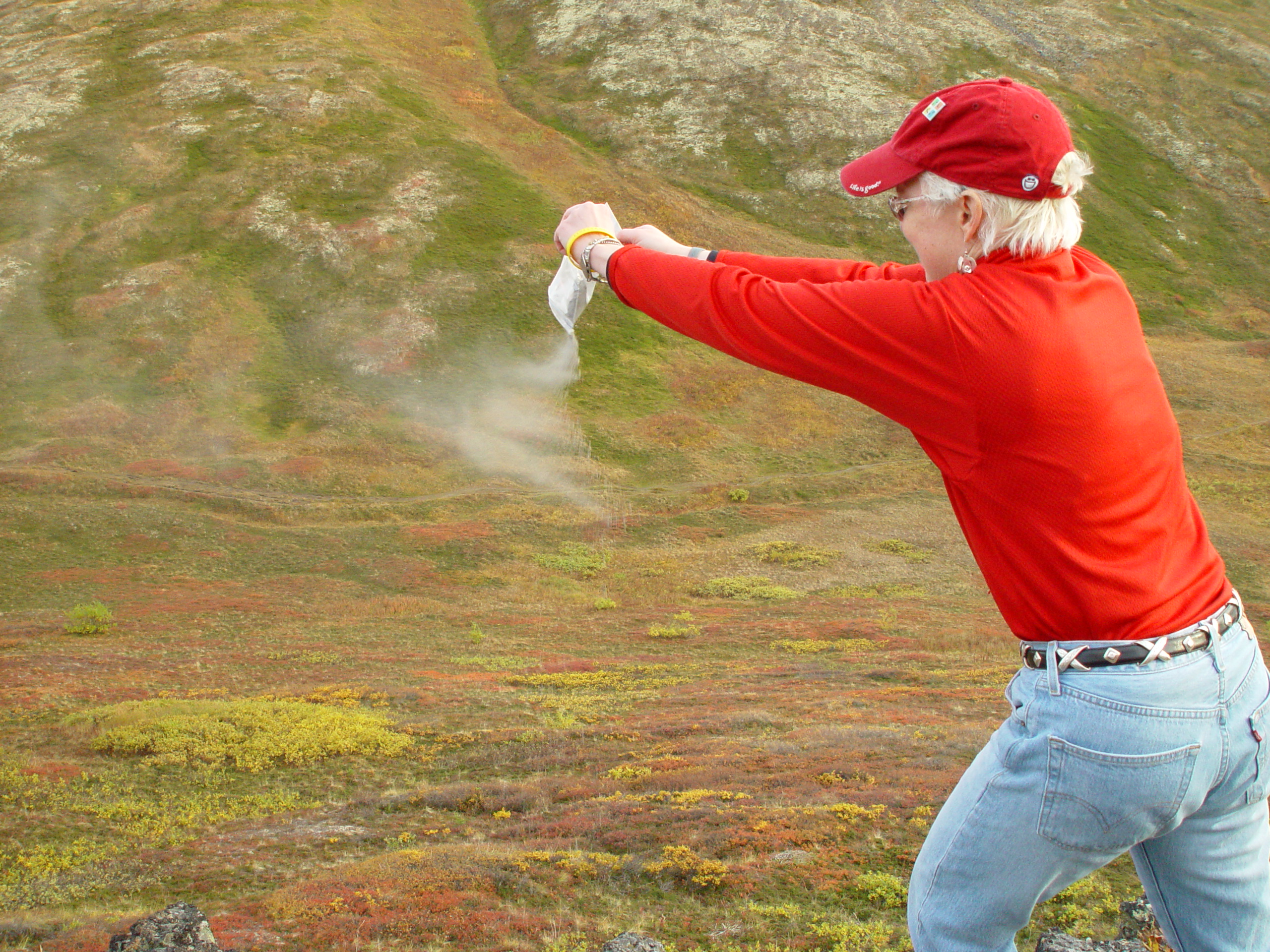 Scattering is NOW the #1 disposition of cremated remains in the United States and Canada and continues to grow. Funeral professionals are the only ones that aren’t catching on. Most funeral professionals consider scattering a dirty and unprofitable choice of final disposition. They will help you get buried or interred. They will help you create funeral and memorial events. But when the choice is to scatter the ashes, they will help you as far as the door! Some of the more progressive funeral homes now offer special urns for families that choose to scatter the ashes, but that’s about as far as it goes.
Scattering is NOW the #1 disposition of cremated remains in the United States and Canada and continues to grow. Funeral professionals are the only ones that aren’t catching on. Most funeral professionals consider scattering a dirty and unprofitable choice of final disposition. They will help you get buried or interred. They will help you create funeral and memorial events. But when the choice is to scatter the ashes, they will help you as far as the door! Some of the more progressive funeral homes now offer special urns for families that choose to scatter the ashes, but that’s about as far as it goes.
Cremation can be an exciting and beautiful way to celebrate the deceased and bring together their friends and family for a positive and memorable experience. It provides an opportunity for the departed to bring together those that they leave behind and touched most during their life well lived. Cremation: it can be more economical; it can be greener; it allows for more time and planning; and it has infinite options only limited by the creativity of the living!

